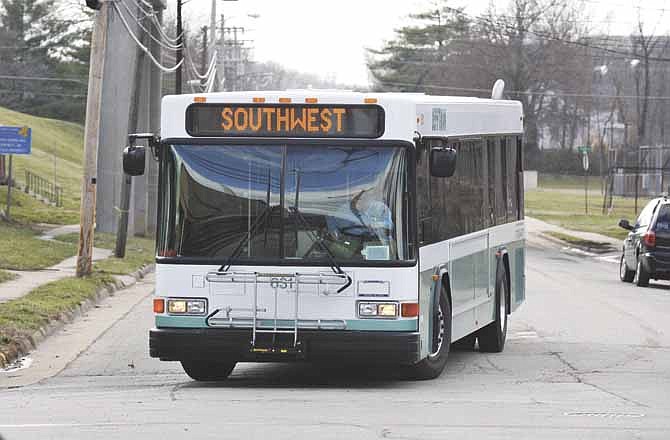As Jefferson City looks to continue its discussions on the future of its transit system, one city official has brought up the idea of switching the type of system the city operates.
Earlier this month, the City Council was considering a cut to transit service that would stop midday transit service in an effort to help cover a $1.68 million shortfall in the current budget. Though the funds were restored for the transit system to continue its normal service operations, the city is considering an evaluation of its system, from forming a type of resident commission to hiring an outside facilitator to guide residents and city leaders through the discussions.
Mayor Eric Struemph has mentioned the possibility of looking at a different kind of transit system. Jefferson City transit operates a fixed-route system, but Struemph has said other cities operate what's called a flex-route system, something the city may want to consider.
Richard Turner, transit division director, said the flexroute, or route-deviation, system allows cities to operate a transit system without a separate paratransit, or demandresponse, system, such as the Handi Wheels service in Jefferson City. The Federal Transit Administration requires cities with a fixed-route system to operate a separate paratransit system, he said.
Jefferson City's transit system has around 350,000 riders per year and about 54,000 of those are on Handi Wheels.
"It's quite costly to operate a paratransit operation," Turner said. "If you have a flex system or a route deviation ... you don't have to have a demand response."
That's because the flex system enables a bus to have a designated route, but be able to pick up passengers who have called in ahead of time at a location off the normal route. Passengers could then be dropped off at another location also not on the normal route. The service can be provided within a set distance off the normal, designated route or it can be a curb-to-curb service offered anywhere within city limits, which could delay the entire route substantially.
"You would have the basic route, but it could deviate off the route," Turner said. "But it would still be timed ... if there was no call for deviation, the bus may have to stop and sit somewhere for five or 10 minutes."
Turner said two Missouri cities offer flex routes, St. Joseph and Joplin, primarily to avoid the costs of a separate paratransit route.
"You need to really understand the reasoning for route deviation; it is to save money," Turner said. "The Handi Wheels service is quite expensive to operate."
He said the paratransit routes are a custom service that's specifically designed to meet the needs of those with disabilities and, with a flex route, a city would lose that.
"I don't think that's what Jefferson City really wants to do," Turner said. "It's just, how much service do you want to have? How efficient do you want your service to be?"
Having two separate systems allows the fixed routes to be as efficient as possible, Turner said, while the paratransit routes fill a real need in the community.
"Everybody's ride is equally important," Turner said.
Accompanying photo: Jefftran bus on Miller Street
Related article:

